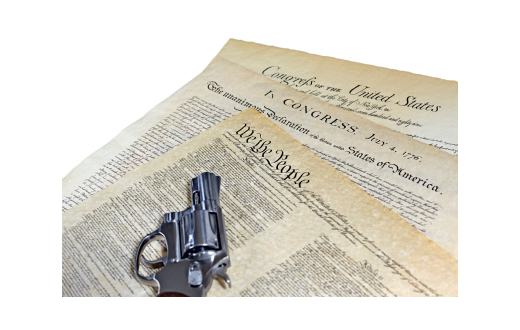Throughout human history, firearms have played a significant role in shaping societies, politics, and warfare. From the earliest handheld cannons to the sophisticated firearms of today, the evolution of guns has been marked by ingenious mechanical innovations. These advancements not only transformed the way we wage war but also revolutionized industries, enhanced personal defense, and influenced the course of history. In this blog post, we embark on a journey through time to explore some of the historical gun mechanisms that have left an indelible mark on the industry.
Matchlock: Igniting the Flame
The matchlock mechanism represents a significant milestone in the history of firearms. Developed in the 15th century, it introduced a reliable method of igniting gunpowder, leading to the widespread adoption of handheld firearms. The matchlock featured a slow-burning match cord held in a movable arm, which was lowered onto the priming powder when the trigger was pulled. While relatively simple in design, the matchlock was a game-changer, empowering infantry with newfound firepower and altering the dynamics of warfare.
Flintlock: Sparking the Revolution
The flintlock mechanism, invented in the early 17th century, improved upon the matchlock’s limitations. Instead of relying on a burning cord, the flintlock utilized a sparking flint that struck against a steel frizzen, creating a shower of sparks to ignite the priming powder. This innovation made firearms more reliable, faster to reload, and less susceptible to environmental factors such as rain. The flintlock mechanism played a pivotal role in numerous historical events, including the American Revolutionary War and the Napoleonic Wars.
Breech-loading: From Front to Back
Before the advent of breech-loading firearms, most guns were loaded from the muzzle end. This process was time-consuming and often required the user to stand to the side while reloading, leaving them vulnerable. Breech-loading mechanisms revolutionized this approach by allowing the user to load the ammunition from the rear of the barrel. Examples include the early hand cannon and later developments such as flintlock and percussion cap breech-loading firearms. Breech-loading guns significantly increased the rate of fire and simplified reloading, marking a turning point in firearms technology.
Revolvers: Spinning Innovation
The introduction of the revolver mechanism in the early 19th century brought forth a new era of firearms innovation. Revolvers featured a revolving cylinder that held multiple chambers, each loaded with a single round. This allowed the shooter to fire multiple shots without needing to reload manually. The revolver became synonymous with the Wild West and law enforcement, proving to be a reliable and formidable tool for personal defense. The design principles of the revolver continue to influence modern firearms, particularly in the realm of self-defense handguns.
Semi-Automatic and Automatic Firearms: The Power of Automation
Advancements in mechanical engineering led to the development of semi-automatic and automatic firearms, which propelled the industry into the modern era. Semi-automatic firearms, like the self-loading pistol, allowed for rapid firing without manual cocking or reloading after each shot. Automatic firearms, such as machine guns, introduced the ability to fire continuously with a single pull of the trigger. These innovations transformed military tactics and increased the efficiency of armed forces, but they also raised concerns about the destructive power of firearms and the need for stricter regulations.
The historical evolution of gun mechanisms has been a journey of human ingenuity and innovation. From the matchlock to the automatic firearms of today, each mechanical advancement has shaped the industry and left an indelible mark on society. These innovations have empowered armies, protected individuals, and influenced the course of history. However, as we explore the realm of firearms

